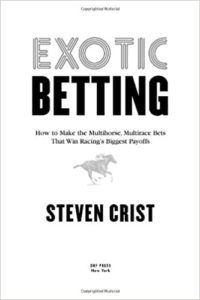What is an exotic bet?
 In Britain, what qualifies as an ‘exotic’ bet varies slightly from bookmaker to bookmaker but, generally speaking, the term typically applies to a range of Tote bets, above and beyond standard win, place and each-way bets. In short, an exotic bet is a bet on multiple horses in one or more races. In common with all Tote bets, all the money staked on a particular ‘exotic’ market is pooled together and, after deductions, the remaining pool is divided by the number of winning tickets to arrive at a winning dividend.
In Britain, what qualifies as an ‘exotic’ bet varies slightly from bookmaker to bookmaker but, generally speaking, the term typically applies to a range of Tote bets, above and beyond standard win, place and each-way bets. In short, an exotic bet is a bet on multiple horses in one or more races. In common with all Tote bets, all the money staked on a particular ‘exotic’ market is pooled together and, after deductions, the remaining pool is divided by the number of winning tickets to arrive at a winning dividend.
Thus, after an unlikely result, or series of results, exotic bets can produce huge dividends for a small initial outlay, which increases their attraction. Of course, exotic bets are more difficult to win than standard win, place and each-way, but it is possible to perm multiple horses in a single race, or multiple races, where applicable, to increase the chances of doing so. Another type of bet worthy in mention is in-running, or live bets. Also known as in-play bets, those looking for live betting opportunities want to take advantage of bet odds during a live sporting events.
Single-race exotic bets include the Exacta and Trifecta, which are akin to traditional forecast and tricast bets, and the Swinger, in which the idea is to select two horses to be placed in the first three, in any order, in a race. Multiple-race exotic bets include the Scoop6, Jackpot, Placepot and Quadpot.
The Scoop6 operates only on Friday and Saturday and requires punters to pick the winners of six designated races, with a consolation fund for six placed horses and an additional bonus fund for winners to play for. The Jackpot operates on similar principles, but is a daily pool, with no consolation or bonus funds. The Placepot, too, is a daily pool, which can be won by picking six placed horses in the first six races of a British meeting, while the Quadpot is a consolation pool for punters who are eliminated from the Placepot after the first two legs.